
Springtime in Copenhagen can be barren. The trees are just branches and even the swans are shivering in their giant nests. The only pops of color are little tiny purple and white flowers shooting up through the grass in the park, and… the glorious Danish open-faced sandwich, smørrebrød.
 Spring flowers lead the way to Rosenborg Castle in Copenhagen.
Spring flowers lead the way to Rosenborg Castle in Copenhagen.
Our cold March in Denmark was saved by the Danes’ penchant for the delicious open-faced sandwich. The best smørrebrød we found was at the Copenhagen restaurant Øl and Brød, which we carried down a few doors and enjoyed with beer at Mikkeller Bar.
The Danish smørrebrød really is sandwich as art. You don’t want to just slop these together. If the smørrebrød is any indication of Nordic cuisine, we PB & J people have a lot to learn about lunch.
Luckily these sandwiches call for ingredients you can find at your local grocery store. All it takes is a little finesse and you can create your own smørrebrød extravaganza!
Each one is first butter and bread. (Smørrebrød translates to butter and bread.) But not just any bread. The bread is a Danish rye, a small, dense rectangle of grains and seeds.Rye bread in Europe isn’t like the deli rye bread at the store. It’s high in fiber and much denser than regular whole wheat bread too. If it’s not in the bread aisle, you can find it near the deli section or buy this German rye bread 3-pack online.
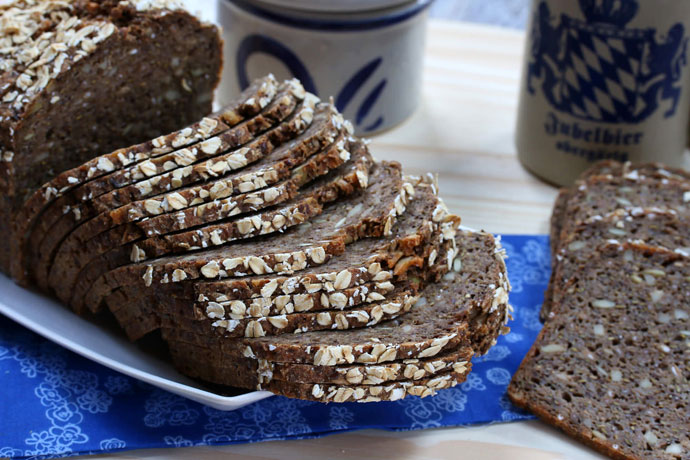 To be super authentic, you can even make your own easy Danish rye or rugbrød at home!
To be super authentic, you can even make your own easy Danish rye or rugbrød at home!
Then comes the paint for the canvas, I mean sandwich. After a thick layer of European-style salted butter, you place the toppings: gravlax (Scandinavian-style cured salmon with dill), small salty shrimp, pickled herring, hard-boiled eggs, cheese. They neatly pile on those toppings like nobody’s business.
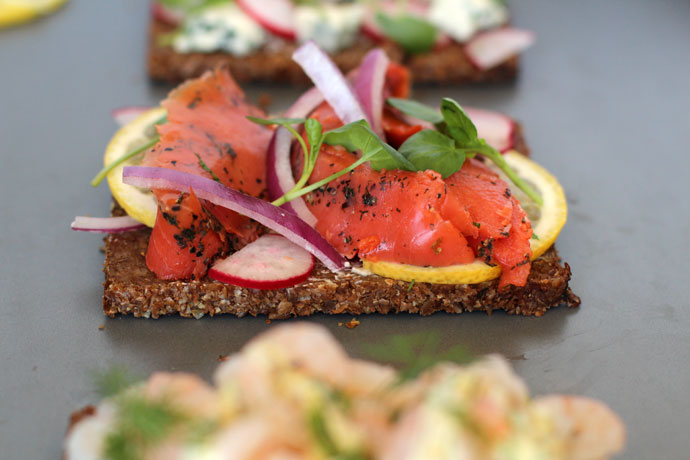
The garnishes are a million fold! Radishes, cucumbers, dill, sauces, lemon, and red onion add crisp, crunch and sour flavor.
Cultural Notes: Farmers were the first to eat a simplified version of the Danish open-faced sandwich. Danes today eat them in both shops and in formal restaurants, as well as bring them in a metal lunchbox to work. Smørrebrød, in proper Danish etiquette, is eaten with a fork and knife. It’s hard to guarantee a good bite without utensils!
One of the most popular toppings is pickled herring… which I haven’t included in my post today. Scandinavians love their pickled herring, which is in ever-present supply in the North Sea. I just can’t acquire the taste for it!
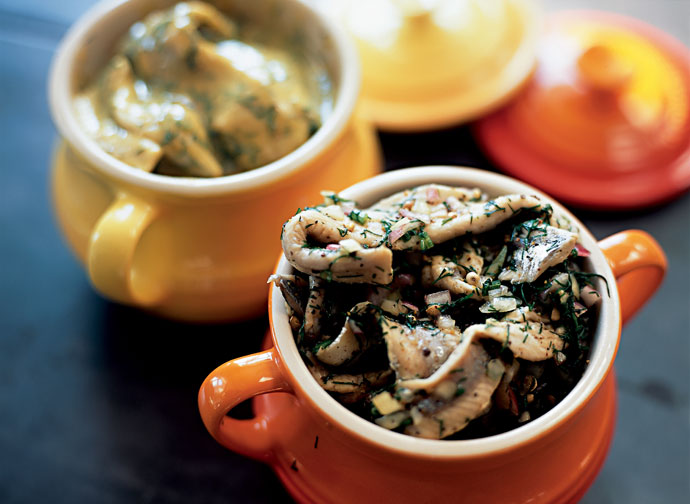 This mustard herring looks beautiful, but it’s a bit too fishy for me…
This mustard herring looks beautiful, but it’s a bit too fishy for me…
How to Make Danish Open-Faced Sandwiches
The three sandwiches I want to share today are commonly served in Denmark. I did want to make one with some proper Danish soft smoked cheese, rygeost, but I couldn’t find it at my local European market. Danish blue cheese stands in, and you can use cheddar too for lighter flavor.
To eat these in the right order, start with shrimp and gravlax and move to the cheese-based smørrebrød. If you do make a meat one (with roast beef perhaps), you would eat it right after the fish one.
Danish food (and the city of Copenhagen) is definitely precise and well-organized with a calming beauty about it. Organize your first shrimp smørrebrød as such! Bread and butter, then lettuce and hard-boiled eggs. Pile on that shrimp and then the creamy, mustard dill sauce.
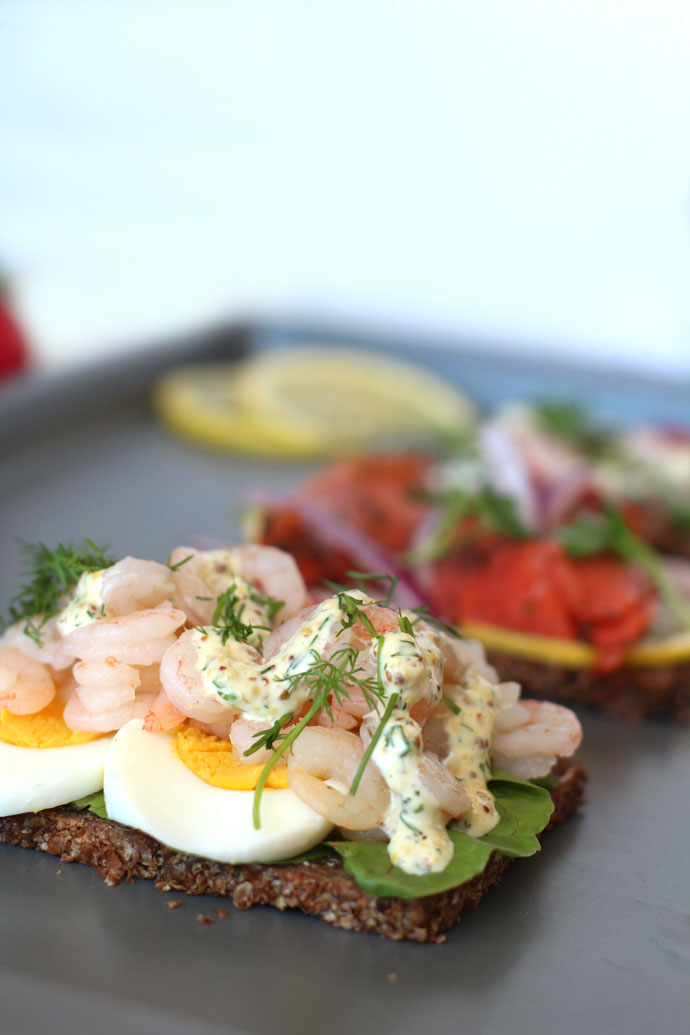
Then comes the gravlax or cured/smoked salmon. This one gets topped with red onion, dill and lemon. We did have some sandwiches in Copenhagen with a whole lemon slice on them, assumably to be eaten as well. The rind’s acidity does break up the richness of the salmon.
Last, the cheese! Danish blue cheese is strong so you can be minimal with it. The cheese one tastes good with cheddar too, especially smoked cheddar. Slice the radishes thinly and end your smørrebrød experience on a crisp, tasty note!
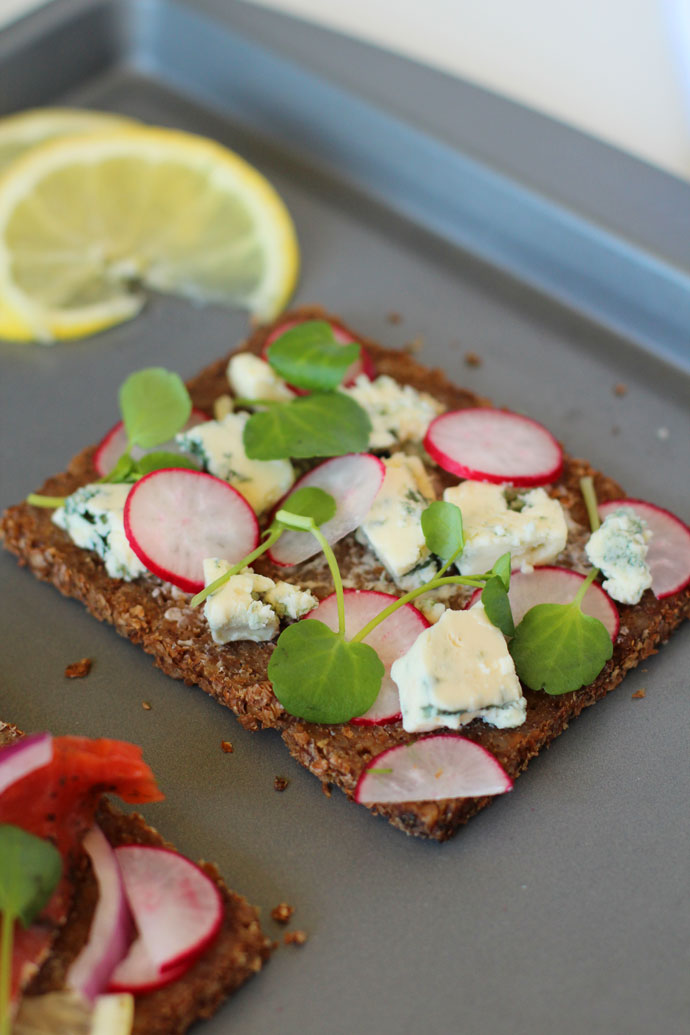
SmørrebrødDanish Open-Faced SandwichesA savory lunchtime meal from Scandinavia 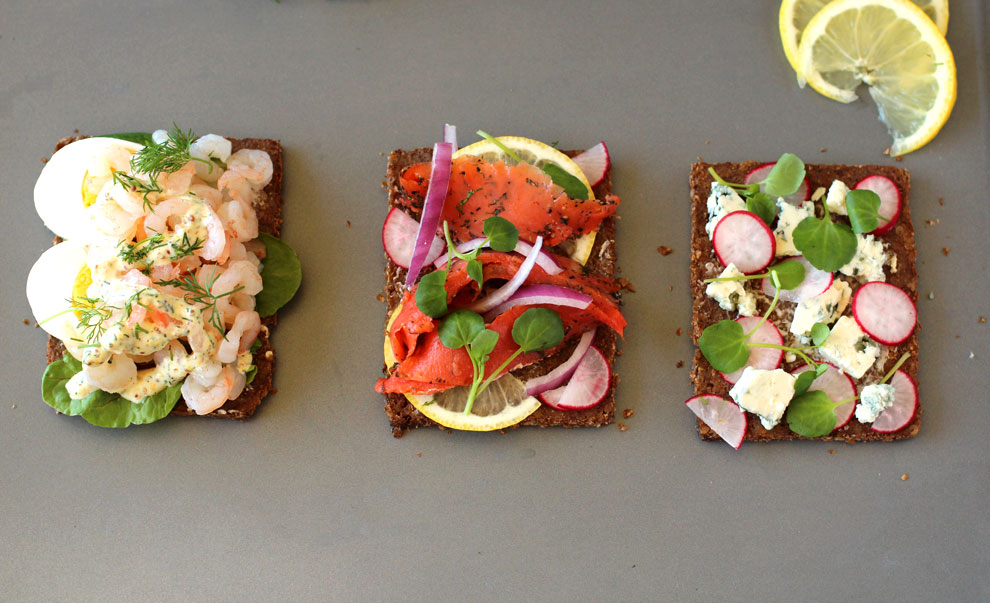
|
|---|
| Prep Time: 30 minutes |
| Cook Time: None |
| Serves: 2 |
Ingredients |
| For Shrimp Open-Faced Sandwich: (Rejemad) |
| Sauce for Shrimp Sandwich: |
| For Salmon Open-Faced Sandwich: |
| For Cheese Open-Faced Sandwich: |
Instructions |
| 1. Generously spread salted butter on all slices of bread. Hard-boil eggs. | 2. For Shrimp Sandwich: Set lettuce on buttered bread, then sliced hard-boiled eggs, then pile on shrimp. Make sauce by mixing together mayonnaise, Dijon mustard and chopped dill. Drizzle sauce generously on top of sandwich, or for more flavor, mix shrimp with sauce prior to putting on bread. Garnish with watercress. |
| 3. For Salmon Sandwich: On top of buttered bread, layer gravlax and lemon slices. Garnish with red onion and dill sprigs. |
| 4. For Blue Cheese Sandwich: Break apart blue cheese by hand and place on buttered bread. Top with sliced radishes and garnish with watercress. |
Notes |
| Gravlax: The Scandinavian preparation of cured salmon is available at local grocery stores. You can also substitute regular smoked salmon or lox. | Danish Rye Bread: Danish Rye Bread is much smaller and denser than normal rye bread you might find at the store, although you can use regular deli rye in a pinch. This German rye bread multi-pack is a good option. It tastes great toasted too! |
Flickr photo of herring by Skanska Matupplevelser
More from my site





 Based on 6 Review(s)
Based on 6 Review(s)
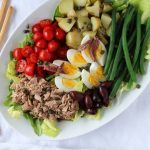
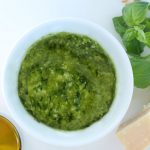




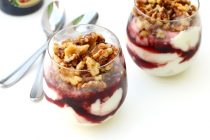
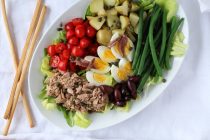


2 Comments
David Wilson
I grew up in Manchester UK and my Mum and I often ate lunch at the Danish Food Centre. I still make my favorite sandwich for my family here in Hawaii.